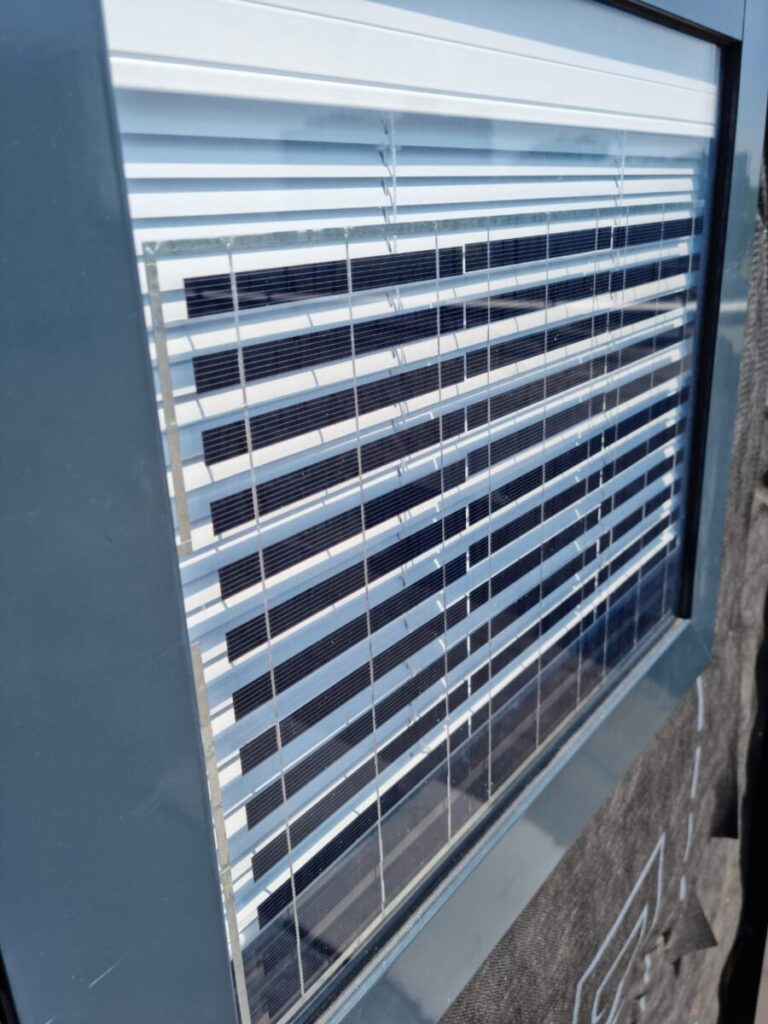The new multifunctional PV window concept aims to produce electricity while providing overheating protection for better indoor thermal and visual comfort. It consists of an insulating glazing with bifacial crystalline silicon solar cell strips and built-in blinds that act as reflectors for the back of the cells.
A research group coordinated by the Netherlands Organization for Applied Scientific Research (TNO) has a multifunctional PV window concept that aims to produce electricity at the same time provides protection against overheating for better thermal and visual comfort indoors.
“The ZIEZO window consists of a unique insulating glazing (IGU) with bifacial crystalline silicon solar cell strips and built-in blinds,” said Simona Villa, the lead author of the study. pv magazine. “When the blinds are deployed, they will act as a reflector, directing some of the sunlight to the back of the two-sided cells, boosting energy generation. To our knowledge, there is no bifacial PV window for building integration on the market so far.”
The system was presented in the paper “Outdoor performance analysis of semi-transparent photovoltaic windows with bifacial cells and integrated solar shading”, published in RRL solar energywhere the authors explained that the system is an evolution of a window technology developed and patented by Dutch glass company Pilkington without the solar cells.
The new solar window can operate in a ‘no boost’ mode when the blind is stowed in the top storage box or in a ‘partial boost’ mode when the blind is extended but left open. Additionally, it can operate in “maximum boost” mode when sunlight is blocked from entering the room. Users can automatically adjust the position of the blinds to prioritize PV output or thermal and visual control.
The research group, which also included scientists from Pilkington itself, was deployed 12 small protesters at the research facility outside SolarBEATwith variations in terms of PV cell types, coverage levels and types of blinds. In addition, 6 full-size windows have also been installed in the office building of the Pilkington headquarters in Enschede, the Netherlands.
“A full year of outdoor monitoring demonstrated the great potential of this innovative BIPV product,” said Villa. “The immediate energy boost on sunny days can be up to 25%, with the most reflective sun protection. If we look at the daily average over the entire measurement period, the increase is approximately 13%. The orientation and tilt angle of blinds obviously have a major influence on the results, but also on the irradiation conditions and the position of the sun.”
The results collected at the SolarBEAT test site were consistent with the results obtained with the larger ZIEZO windows installed at the Pilkington office in Enschede.
“It is good to realize that the power density of this BIPV window is roughly 100 W/m2with a transparency of 40%, and the boost given by the reflection of the sun blinds is on top of that,” Villa continues. “This makes this semi-transparent BIPV product extremely competitive, with performance comparable to colored, opaque PV solutions. The glass company Pilkington will now try to bring the product to market.”
“We also look at the other benefits of this product, such as the visual comfort and thermal control in the building thanks to the active shading device,” Villa said, referring to the future directions of the group’s work.
This content is copyrighted and may not be reused. If you would like to collaborate with us and reuse some of our content, please contact: editors@pv-magazine.com.


